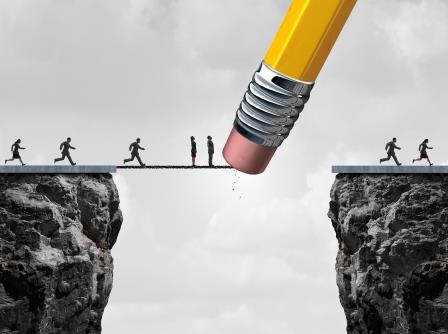 India pulling out of the Regional Comprehensive Economic Partnership (RCEP) has been the talk of the town. RCEP was launched in 2012 as an initiative by ASEAN countries to encourage trade among themselves, and with its six trading partners (that includes India). RCEP (with India) would have covered nearly half of the world population and around 40 percent of the global GDP. The numbers clearly show that RCEP provides one of the largest markets for trade.
India pulling out of the Regional Comprehensive Economic Partnership (RCEP) has been the talk of the town. RCEP was launched in 2012 as an initiative by ASEAN countries to encourage trade among themselves, and with its six trading partners (that includes India). RCEP (with India) would have covered nearly half of the world population and around 40 percent of the global GDP. The numbers clearly show that RCEP provides one of the largest markets for trade.
India’s decision to pull out from RCEP received a mixed response. On the one hand, the decision to pull out from RCEP was applauded, since joining it would have hurt the domestic industries. It is feared that by entering into a Free Trade Agreement (FTA), and being a part of RCEP, Indian market will be flooded with imports, especially from China. The domestic industries would find it difficult to compete with the cheap imports from other countries, negatively affecting the domestic business. On the other hand, this move was also seen as a missed opportunity for India.
There could be agreements and disagreements on both sides of the arguments. However, the question that comes to our mind is why India is embracing protectionist policies even in the 21st century. As per the data from Global Trade Alerts (GTA), India was only next to the US in terms of the number of restrictive trade interventions. For instance, the number of restrictive trade interventions by the US stood at 401, whereas for India, the number stood at 240. The question is whether the protectionist trade policies will benefit the country? Empirical evidence shows that the protectionist policies will only hurt both the consumers and industries in the long run. We have the best example of how both the economies, US and China, are getting negatively affected by the trade war.
India is in its 28th year of liberalisation. It is an undisputable fact that liberalisation measures have helped in improving the competitiveness of Indian industries. The measures helped in improving the business climate in the country, and also in attracting investment from foreign investors. Since then, India has made significant strides by initiating various measures and reforms to make the country a better place for doing business. For instance, in the Ease of Doing Business Report (2020) by the World Bank, India has moved 14 places up to the 63rd position among 190 nations. This by itself is a huge achievement as the country has initiated various reforms in this front. However, it needs to be stressed that more reforms are needed that would help India to move to the next stage of economic growth.
It was anticipated that India would benefit from the ongoing trade tensions between US and China, with the hope that the exports from India will increase. In addition, with the various global companies shifting their manufacturing base and production units from China, it was believed that India would benefit. However, things didn’t turn out well for India. Firstly, let’s analyse how India improved its share in the exports to US and China during this period. For instance, in September’18 the YoY growth rate of exports to the US was 11.6 percent. However, it declined to -2.64 percent in September’19. During the same period, the YoY growth rate of exports to China declined from 36 percent to -0.60 percent. With the numbers in hand, we cannot say that the Indian exports benefited from the ongoing tensions between the US and China. Similarly, between 2011 and 2018, exports as percent of Indian GDP declined from 24.5 percent to 19.6 percent.
During the same period, the share of exports to the world GDP has also declined. For instance, the share of exports to the world GDP declined from 30.4 percent in 2011 to 29.3 percent in 2017. However, there are countries that have performed exceptionally well during this period. For example, Vietnam has improved the share of exports to its GDP from 79.3 percent in 2011 to 95.3 percent in 2018. Vietnam is also a signatory of Comprehensive and Progressive Agreement for Trans-Pacific Partnership (CPTPP). It shows that it not the FTAs but other factors that govern the performance of the export sector.
Similarly, it is expected that the ASEAN countries including Vietnam are expected to benefit from the US-China trade war, as most of the production units will shift to these countries. With RCEP also coming to the place, it will be an additional boost for the ASEAN countries. Thus, ASEAN countries have a comparative edge over India through the RCEP, being a more attractive destination for global companies.
In such a scenario, it looks like India has missed a golden opportunity to be a part of the Global Value Chain. The protectionist policies will not benefit the country. The need of the hour is to initiate reforms, and make India a more competitive market. The country urgently requires reforms in land and labour market. Let RCEP be an eye-opener for us to realize that a lot of work is still pending.








